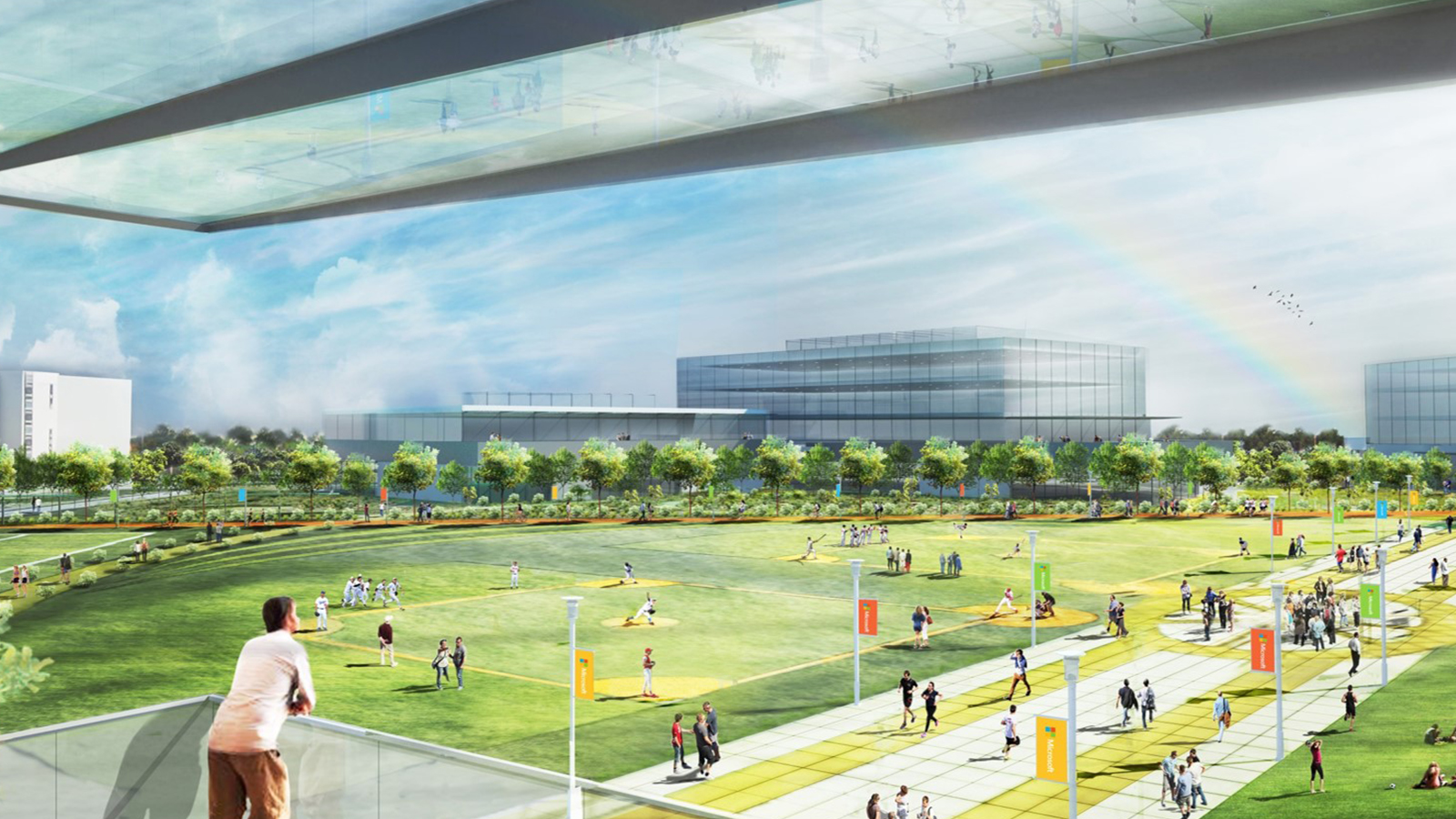
Building the workspace of the future: sneak a look at tomorrow’s Microsoft headquarters
A community plaza where employees can gather, learn, and play. Car-free zones and a cross-campus bridge just for pedestrians and bicyclists. Energy-optimized smart buildings; spaces to spark creativity with teammates; trees, trails, and transit close at hand.
A major redevelopment is coming to the Microsoft headquarters in Redmond, one that will rocket forward a modern vision of workspace that has already started, in recent years, to lift off across the campus and the globe.
The technology-fueled, multiphase project will empower employee collaboration and community connections, add 18 new buildings, upgrade existing workspaces, and enhance sustainability.
“We are building the kind of space we need for the future. We’re building for the employees here now and the eighth graders who will be here one day,” said Michael Ford, general manager of Global Real Estate and Facilities. “In the past, the employee had to flex to the space. Now, the space flexes to the employee.”
The launchpad for the modernization, which will add 2.5 million square feet of new office space to the 500-acre headquarters, is the cluster of buildings at the heart of the original Microsoft campus. Iconic in their own way, the 1980s-era, X-shaped buildings were designed to offer employees plenty of natural light and nearly identical offices. Today, however, the low-ceilinged, many-hallwayed buildings can feel more like a series of mazes, where it’s easy to drift in circles.
But as mindsets and culture have transformed, so has the thinking about how we want to work, create, and connect. Focus and privacy can be found in a soundproof drop-in phone booth or upholstered alcove; inspiration (and, according to research, employee health) can soar in a light-filled atrium, cushy couches providing a welcome landing space for team touchdowns. Impromptu conversations, encouraged by communal work “neighborhoods,” can lead to innovation; better productivity; and faster, more agile development.
These are the types of spaces that will define the Microsoft headquarters modernization and will infuse other building and campus investments coming up in Ireland, India, Israel, Silicon Valley, Brazil, and elsewhere. Designers say that these are the transformations that will bridge where we are with where we’re going.
Transforming how we work
The headquarters renovation is set to break ground in fall 2018 and will take from five to seven years to complete. After older buildings are taken down and new ones are added, Microsoft’s presence in the Seattle area will go from 125 buildings today to 131 buildings. The project will more seamlessly connect both halves of the campus, divided by State Route 520, via a foot- and bicycle-only bridge that will link Microsoft, the Redmond Technology transit station where light rail is slated to arrive in six years, and the nearby regional trail. The walk from the center of one side of campus to the center of the other will take about 7 minutes after the renovation, compared to up to 22 minutes today.
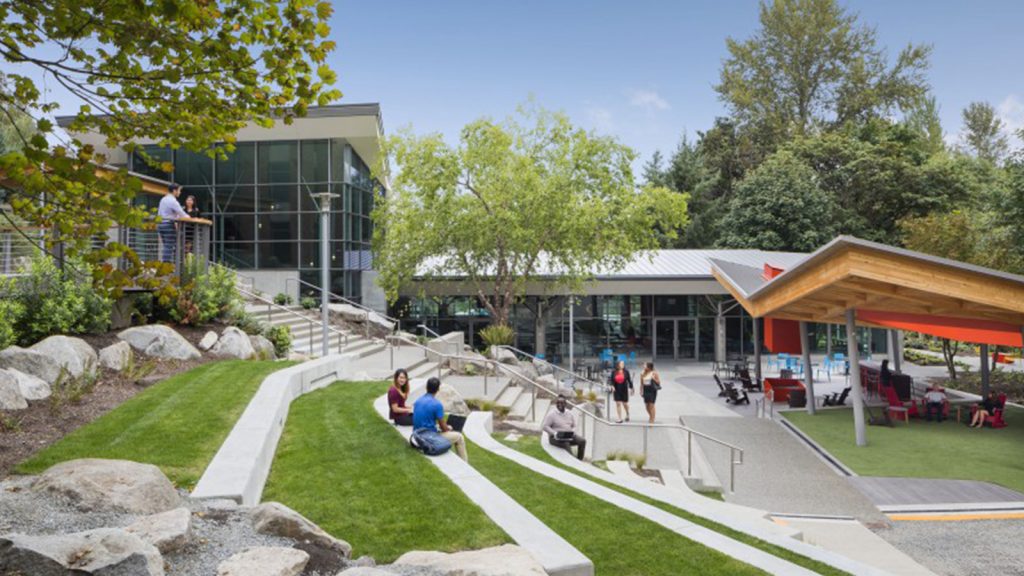
“We are building the kind of space we need for the future … for the employees here now and the eighth graders who will be here one day.”
Innovative, accessible design—informed by years of research, input, and testing around employees’ needs and work styles, as well as by Microsoft’s deep roots in the community—will shape the project’s interior, exterior, and underground spaces.
“We’re taking what we’ve already started—intelligent workspaces, sustainable systems—and moving it to the next level,” Ford said. “We will further improve the employee experience by utilizing technologies, powered by the Microsoft Cloud, throughout the workplace.”
For instance, Ford said, a campus-wide mobile app will make it easier for employees to book one of the company’s Connector commuter or intracampus shuttles, order lunch, or check their favorite cafeteria to see how busy it is.
While every aspect of Microsoft’s campus refresh will be infused with technology, Bill Lee, director of Real Estate, Planning, and Development, doesn’t think of it as designing for technology but as designing for humanity.
“People are getting more technologically connected: if you leave your phone at home, you’re going back to get it; if you leave your wallet, you keep driving. Technology is part of us, and we are designing for humanity because technology is already part of humanity.”
By connecting employees and helping them collaborate, modernized workspaces will make problem solving easier. Some of this transformation has already begun with recent projects in Redmond and beyond.
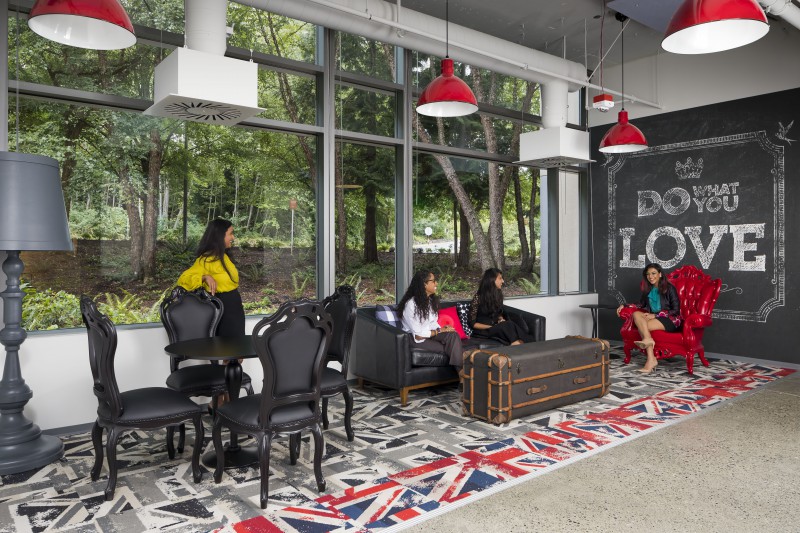
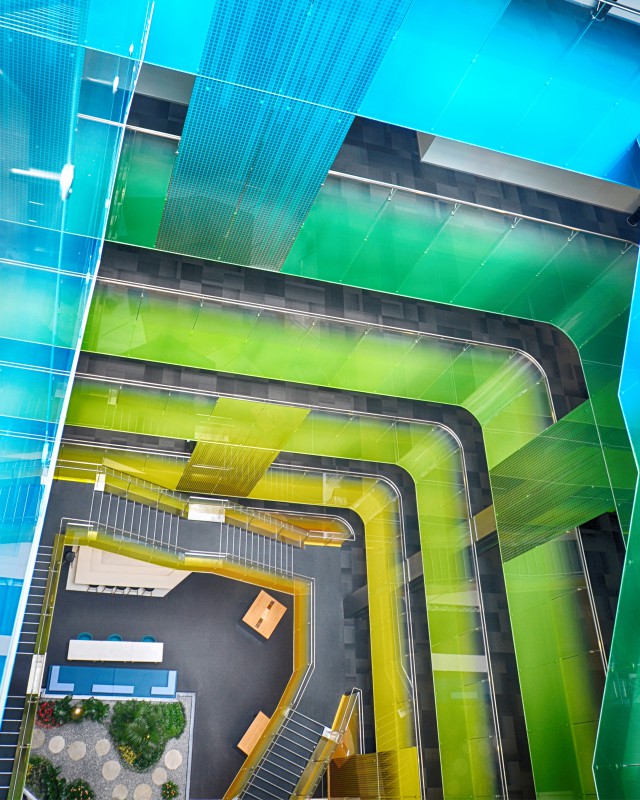

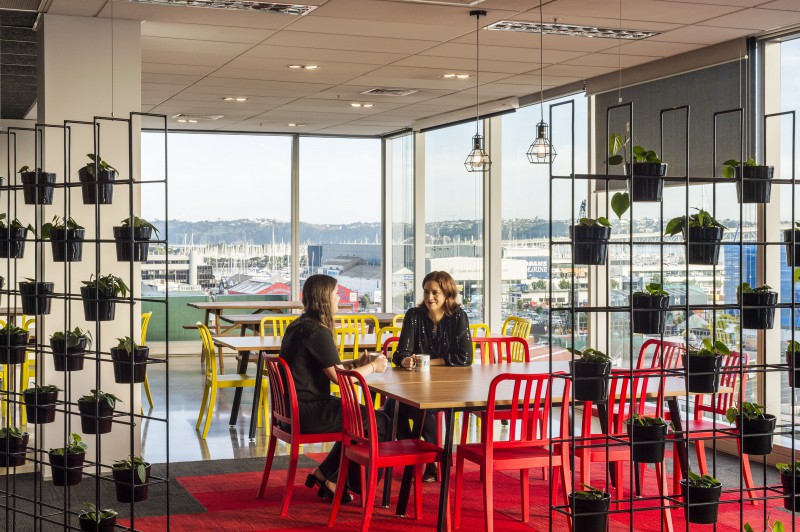
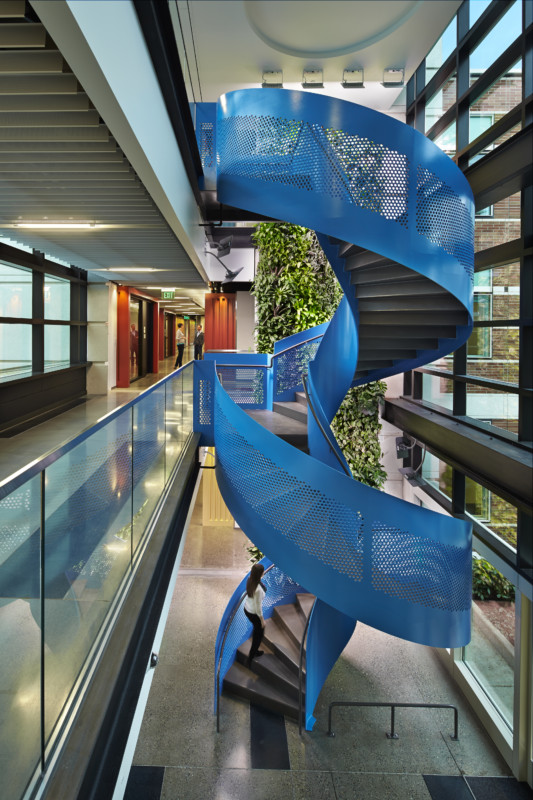
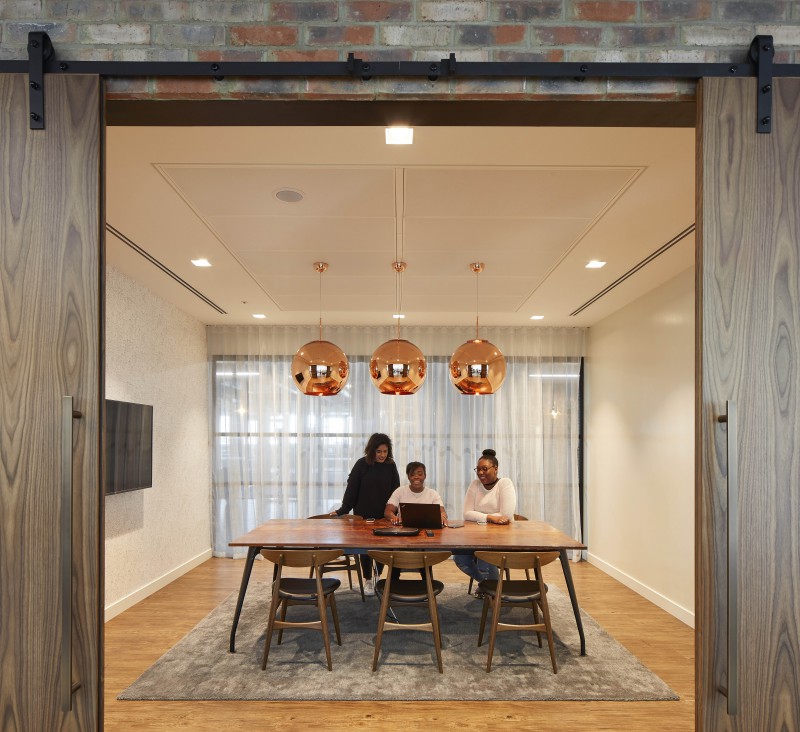
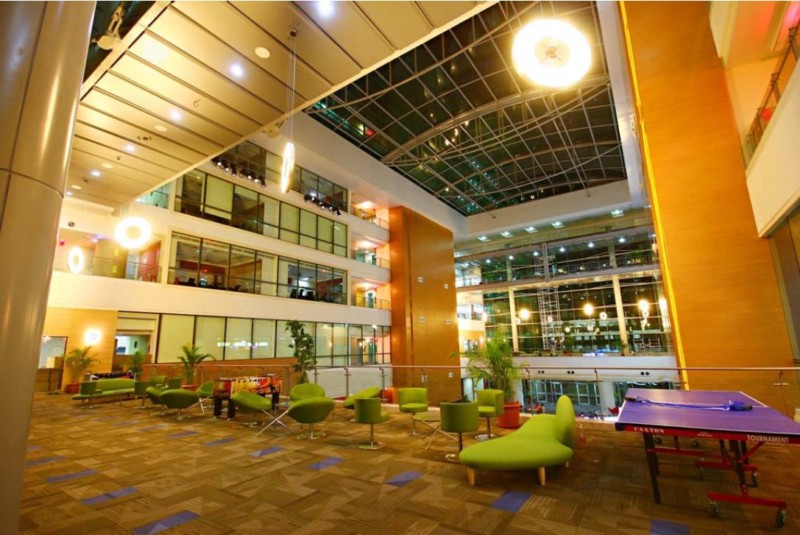
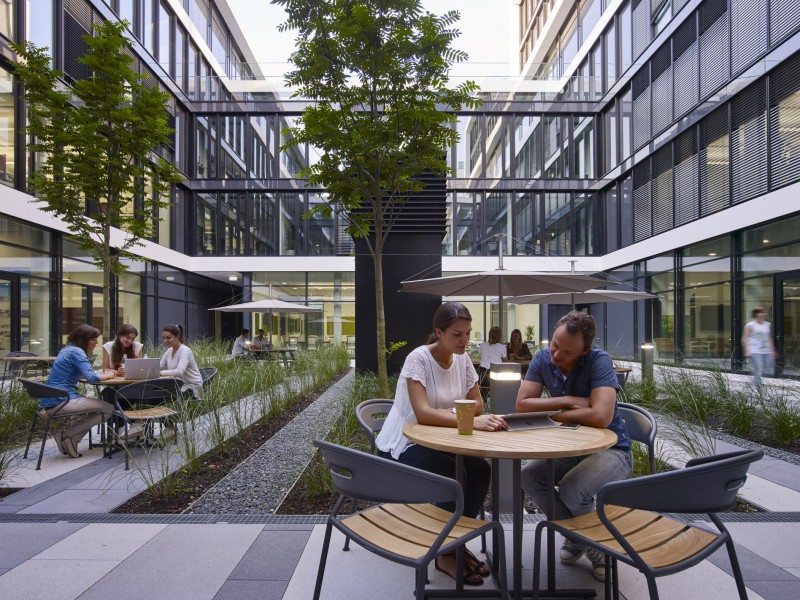
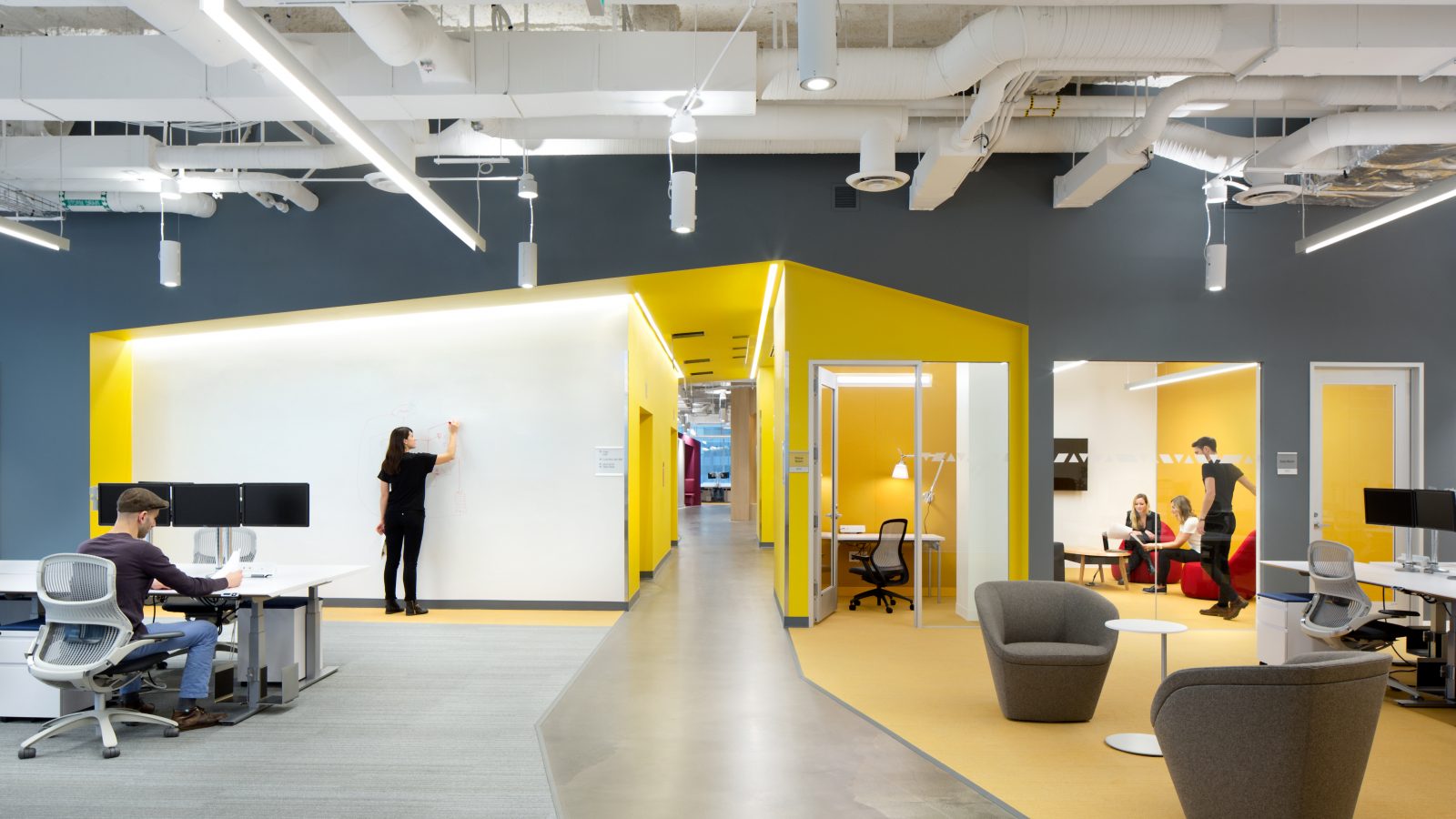

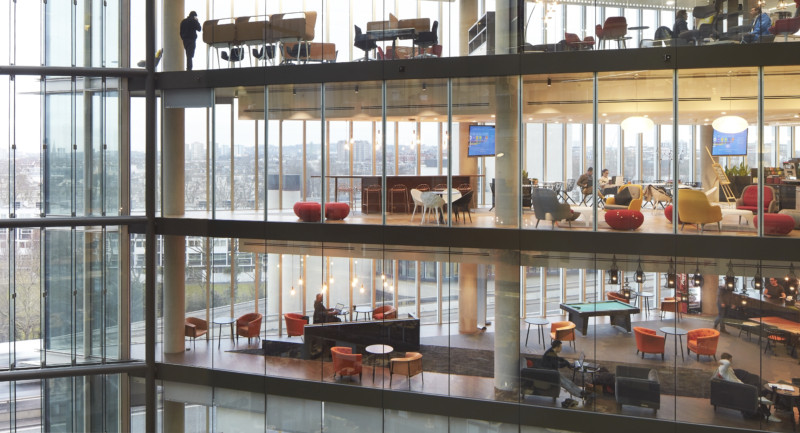
In Building 83, recently opened at the company headquarters, walls of windows and a soaring central atrium bathed in natural light greet employees. A wide, airy staircase wends up the building’s four open-feeling floors, “the sweet spot” for building height, Ford said. The ambience is pleasant but also purposeful: research shows that employees who have more exposure at work to daylight and views of nature take fewer sick days and feel healthier.
Similar themes carry across other modern workspaces. In the new Munich, Germany, office, designers created four multiuse zones (Think; Share and Discuss; Converse; Accomplish) to empower employees to work wherever they like while maintaining a home base where teams can easily find each other. Each zone varies from low technology to collaborative technologies and maps to a specific type of work, mirroring and supporting how projects flow and progress from start to finish.
And inside buildings in Suzhou, China, where employees are focused on research and development, designers made collaboration easier with Scrum-friendly whiteboard wallpaper and shared spaces with movable walls and helped employees recharge with yoga rooms and nature-inspired, color-suffused translucent interiors.
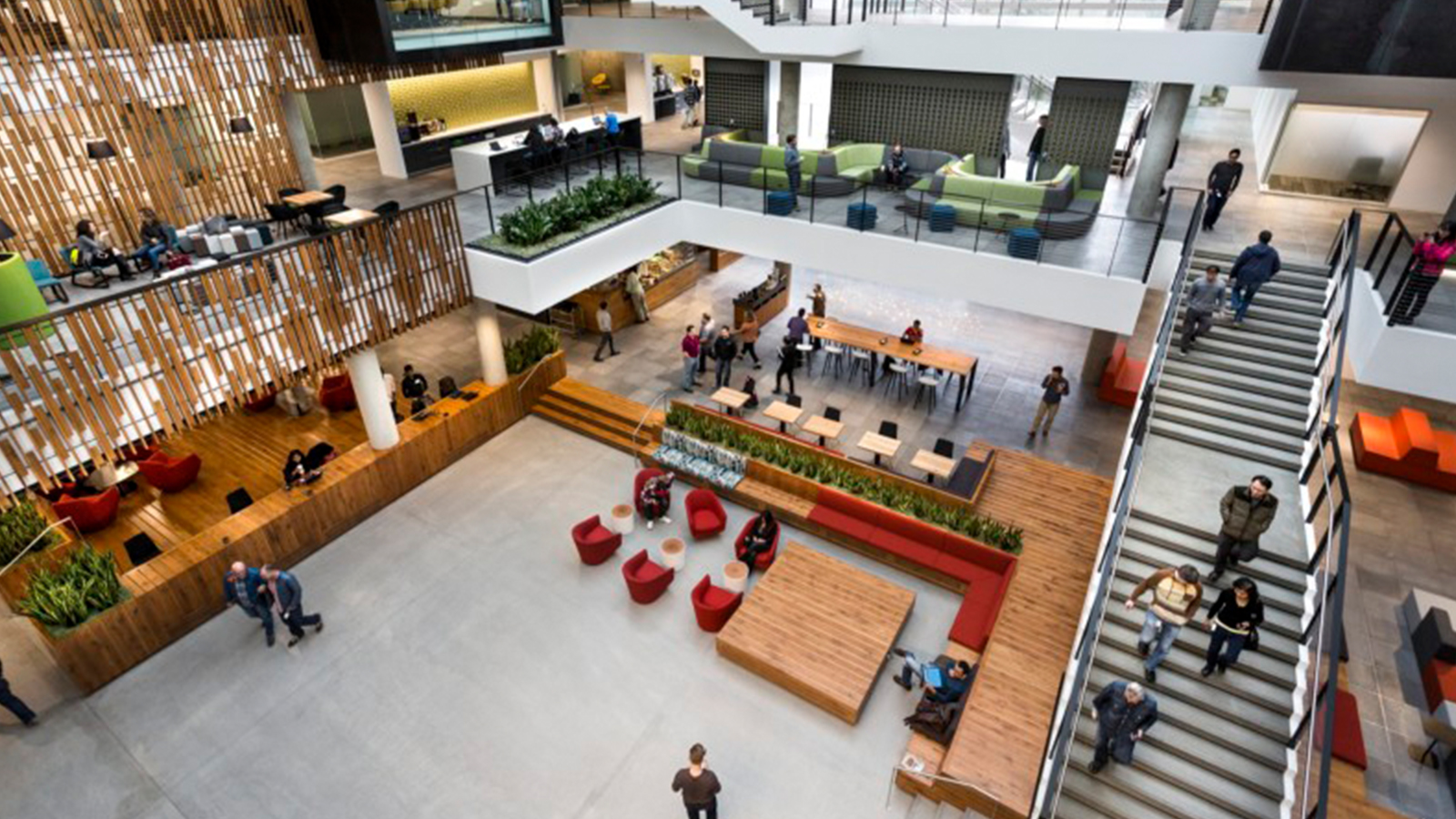
“We’re taking what we’ve already started … and moving it to the next level.”
And inside buildings in Suzhou, China, where employees are focused on research and development, designers made collaboration easier with Scrum-friendly whiteboard wallpaper and shared spaces with movable walls and helped employees recharge with yoga rooms and nature-inspired, color-suffused translucent interiors.
A campus, not a set of buildings
Part of what will transform the Microsoft Redmond campus is not what you will see, but what you won’t see: underground tunnels to funnel services, smart parking garages that direct drivers to where space is available, and tucked-away drop-off areas being designed with the automated vehicles of the near-future in mind. Belowground space will be easily convertible to other uses, such as labs for food growing and cloud server racks, which could send heat back into the food-growing program, creating circular economies.
The services areas, transportation flow, and footpaths were all conceived with one key mantra in mind: in an ideal urban space, Lee said, pedestrians should never have to compete with cars.
“This is going to be an extremely intelligent campus, not because of devices but because of infrastructure,” Lee said. “To have a campus that reflects innovation, we prioritize that urban environment. Walkability, nature, amenities—these all fold in to create community.”
Outside, the redesigned campus will have a global sensibility while reflecting its unique Pacific Northwest environment, where Microsoft has planted deep roots for more than 30 years. A new two-acre plaza will create space for up to 10,000 people to gather for company meetings, product launches, local bands, and farmers’ markets. The project team studied some of the world’s most-beloved public plazas, including Venice’s Piazza San Marco and Seattle’s University of Washington Red Square, to help inform the design of the plaza, which will be surrounded with native flora as well as food and service offerings for employees.
A cricket pitch will join other new sports fields. And Microsoft will continue to create connected outdoor meeting spaces so that employees can benefit from the positive impacts of nature on productivity and happiness.
“Whenever we create new spaces, it creates amazing employee experiences,” said Rob Towne, director of real estate for Puget Sound. “This is going to be a really large-scale rejuvenation.”
